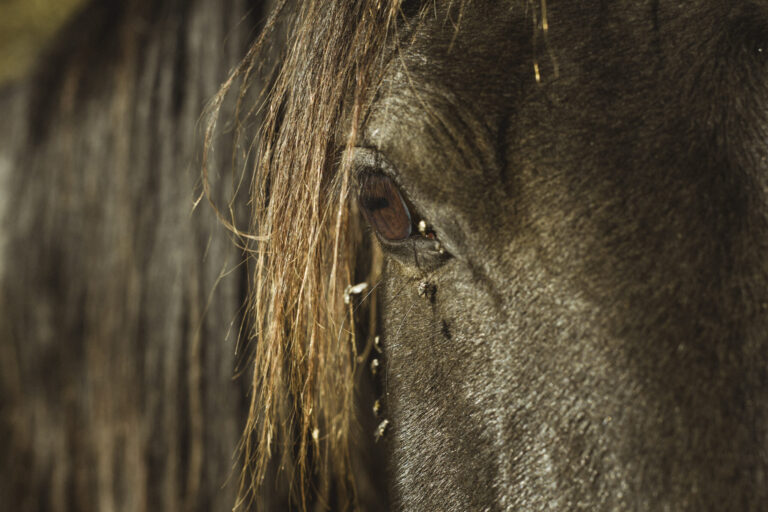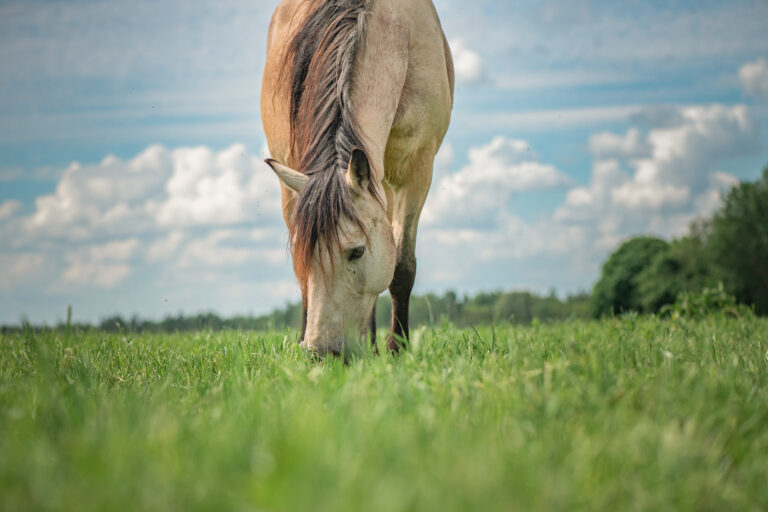
In this episode of the Disease Du Jour podcast, Elizabeth Acutt, BSc, BVSc, MS, Dipl. ACVR-EDI, talked about acquiring quality radiographs in the field. She discussed some of the challenges of radiography in the field compared to a clinic environment, talked about equipment choices, and provided tips for radiographing tricky parts of the horse.
Challenges Associated With Equine Radiography in the Field
“Sometimes I think taking radiographs in the field can feel like you’re a wildlife photographer trying to get a picture of a snow leopard in a blizzard,” Acutt said. “The situation’s not ideal.”
Veterinarians might have to take X-rays in a barn with uneven footing, no power, or poor lighting. “You might even be standing in mud in a field on the side of a hillside,” she said. Furthermore, if the vet doesn’t have a dedicated technician riding with them, they might have to rely on untrained personnel to hold plates or wrangle an unruly horse.
Portable Radiography Equipment
While portable radiography equipment is not as powerful as hospital-based systems, it has significantly improved in recent years. Acutt said it’s important to find a system that makes sense for the veterinarian’s specific needs and types of barns they frequently work in.
“If you work in a lot of barns where you’re not always having ready access to power outlets or you don’t always have dedicated spaces to work in, then having a fully wireless system might be really critical to your success,” she said. She recommends purchasing a 90kVp generator system if possible, which can help when trying to shoot through challenging areas such as well-muscled backs.
Beyond that, she said the type of equipment doesn’t make that much of a difference and depends on the veterinarian’s personal preference. She recommends speaking with the sales representatives for the systems you’re considering and with other veterinarians who are already using those systems in the field to get an idea of what they like and dislike about them.
Field Radiography Tips
Acutt provided many pieces of advice for acquiring quality radiographs in the field. To start, she said, make sure you have your radiography system’s technique chart with you, as well as any other pieces of equipment you might need, such as wooden blocks for hoof X-rays, Play-Doh to pack horses’ feet, and a thin rope halter for taking skull radiographs.
General Distal Limb Radiography Tips
Acutt’s advice for acquiring quality distal limb X-rays is to have the horse stand on a flat, even surface as squarely as possible, to whatever extent is possible within the barn environment. “If you have any slight asymmetry in how the horse is positioned, you’ll have to try to compensate for that with your beam angle,” she said.
Fetlock Joint Radiography Tips
Acutt said you can sometimes struggle to see the fetlock joint space if the sesamoids aren’t elevated off that joint space. “The key to that is just making sure you have enough of a downward angle on your DP projection and also on your oblique projection so that you elevate those sesamoids off of the joint space,” she said.
Carpus Radiography Tips
The challenging part of taking carpal obliques, Acutt said, is knowing when you have the right degree of obliquity. To help with this, she said, in both the DLPMO and DMPLO oblique views, position the accessory carpal bone so it’s one-third of the way superimposed with the rest of the carpus.
Stifle Radiography Tips
“The stifle is a common area of struggle,” Acutt said. “It’s just such a big area to visualize, and you can’t really see the anatomy super well.”
Under-exposure is one common pitfall with stifle radiography, particularly with caudocranial views. She said getting close is key to improving your image when you’ve already maxed out your generator settings.
Another common pitfall with caudocranial projection is angling downwards too much. “Often I find that the more horizontal I go, the better I am able to visualize the joint space,” she said.
The oblique projection angle can also be challenging. The correct angle for that view, she said, is 45 degrees. “You really just want to split the difference between your caudocranial and your lateral view, and that should give you the right amount of obliquity on that view,” she said.
Axial Skeleton Radiography Tips
The axial skeleton has a lot of soft tissue surrounding osseous structures, which can make it challenging to get a good amount of penetration. Acutt recommends getting close and collimating your beam. Collimation limits the aperture through which the X-rays can exit the machine, which decreases the scatter of the X-rays and improves the overall image quality.
Neck Radiography Tips
Acutt said it can be challenging to image the most caudal aspect of the neck due to the musculature in that region. She recommends bringing one of the horse’s front legs back to remove some of the bulk of shoulder musculature out of the beam.
“If you have enough people, you can actually have someone physically lift the leg and retract it, or even just having the horse stand with their legs offset from one another can be enough to help you get that extra bit of penetration that you need in that region,” she said.
Skull Radiography Tips
The skull can be a particularly challenging area to X-ray, especially when the horse is sedated and holding their head in a difficult position. Acutt said it has helped her to imagine the horse’s head as a big cylinder from poll to nose. Then, the angle of your oblique views will be around the long axis of that cylinder. “So, dorsal ventral does not necessarily now mean dorsal ventral from a horizontal plane,” she said. “It’s dorsal ventral relative to that long axis of the horse’s head, of that cylinder.”
Image Interpretation
Image interpretation is another important aspect of radiography that can also be challenging in the field. Veterinarians might have to contend with glare from the overhead sun, emotional owners peering over their shoulder, lack of access to resources or images from different patients to compare to, and lack of access to the patient’s previous films. “You can sometimes feel very pressured into giving an immediate answer in non-ideal conditions,” she said.
In these scenarios, she recommends giving the owner your initial impressions and telling them you’ll have to look closer when you are back in the clinic, even if you have to blame the conditions to buy yourself more time. She also said it is becoming more commonplace to send images to a radiologist for interpretation, which can be especially helpful in high-stakes scenarios such as pre-purchase exams.
About Dr. Elizabeth Acutt
Elizabeth Acutt, BSc, BVSc, MS, Dipl. ACVR-EDI, obtained her veterinary degree from the University of Bristol, United Kingdom. She then traveled to the University of California, Davis, to undergo additional training in her areas of interest: equine orthopedics and sports medicine. She was the first person to complete a residency specifically in equine diagnostic imaging, based at Colorado State University, and became a diplomate of the American College of Veterinary Radiologists (EDI) in 2022. She remained at CSU following her residency in the role of Senior Fellow in Veterinary Diagnostic Imaging. She is currently an assistant professor of clinical large animal diagnostic imaging at the University of Pennsylvania School of Veterinary Medicine. Acutt’s clinical and research interests focus on comparative imaging in the equine athlete.
Related Reading
- 10 Radiographic Prepurchase Abnormalities in Sport Horses
- Techniques for Taking Good Neck Radiographs in Horses
- Equine Stifle Radiology Tricks and Surprises
Stay in the know! Sign up for EquiManagement’s FREE weekly newsletters to get the latest equine research, disease alerts, and vet practice updates delivered straight to your inbox.




